Key Highlights
- Choosing between FBA and FBM can feel overwhelming 😵💫, but it all boils down to what your business values more—hands-off efficiency or full control over fulfillment. Each model can drastically impact profits, time, and how your customers experience your brand.
- FBA is perfect for sellers who want to scale fast, access Amazon Prime users 🚚, and outsource storage, packing, and returns. But beware of mounting fees—slow-selling products could eat away at your margins.
- FBM gives you the reins 🎯—you handle everything from inventory to shipping. This method offers cost savings and flexibility but demands more effort and stellar customer service.
- Sellers with niche products, existing warehouses, or low order volumes often lean toward FBM, while those with high-volume, fast-moving items prefer the plug-and-play nature of FBA.
- FBA offers lightning-fast logistics, Prime perks, and better visibility on Amazon’s search results, often leading to higher conversions—at a price 💸.
- Deciding factors include product fragility, sales volume, and need for control, among others. FBA scales better with high demand, while FBM lets you fine-tune every shipment 📦.
- Multi-Channel Fulfillment lets sellers use FBA inventory to fulfill orders from platforms like Shopify and eBay.
- Buy with Prime enables FBM sellers to add Prime trust and speed to their DTC sites using Amazon’s checkout and logistics.
- Hybrid strategies, using FBA for bestsellers and FBM for niche or fragile products, can balance scale, cost, and control.
- beBOLD Digital can help you assess, optimize, and scale your Amazon fulfillment strategy, FBA, FBM, or both, with expert-backed insights and execution.
On a platform as dominant as Amazon, where countless merchants aspire to conquer, choosing the right fulfillment method on Amazon can be overwhelming, especially when you're torn between FBA (Fulfillment by Amazon) and FBM (Fulfillment by Merchant). Many sellers struggle with questions like, “Which option will save me money?” or “How do I ensure fast shipping and satisfied customers?” The truth is, your choice can significantly affect your profit margins, workload, and customer satisfaction.

Fortunately, understanding the key differences between FBA and FBM can help you make an informed choice tailored to your business needs. So, let's break down the key differences between FBA and FBM, including costs, logistics, and service levels. Let’s get started!
What's the Difference Between Amazon FBA and FBM?
With the convenience and scalability of Fulfillment by Amazon (FBA) versus the control and flexibility of Fulfillment by Merchant (FBM), choosing the right option depends on your business goals. If you're wondering FBA vs FBM, which is better? or trying to understand what is FBA vs FBM, you're not alone. Let us help you compare Amazon FBM vs FBA so you can make an informed decision for your Amazon marketplace management.

Fulfillment by Amazon (FBA) is a service offered by Amazon that streamlines the entire fulfillment process for Amazon sellers in its marketplace. When you enroll in FBA, you send your products to Amazon's fulfillment centers, where they are stored, picked, packed, and shipped to customers. Amazon also handles customer service and returns.
Moreover, your FBA items can be eligible for Amazon Prime, which can boost visibility and attract more customers. It's no surprise that, according to Jungle Scout, 82% of sellers on Amazon use FBA as of 2024. Despite the numerous benefits of FBA, using it may incur additional costs like inventory storage fees and fulfillment fees, impacting profit margins, especially for products with slow sales.
Here's a step-by-step breakdown of the FBA process:

- Product Sourcing and Preparation: Carefully select products that align with Amazon's guidelines and prepare them for shipment, including labeling and packaging.
- Shipping to Amazon Fulfillment Centers: Ship your products to Amazon's designated fulfillment centers, ensuring they meet specific packaging and labeling requirements.
- Storage and Inventory Management: Amazon stores your products in their warehouses, managing inventory levels and tracking stock movements.
- Order Fulfillment: When a customer places an order, Amazon picks, packs, and ships the product directly to the customer's address.
- Payment and Fees: Amazon handles payment processing and charges various fees, including referral fees, fulfillment fees, and storage fees.
What is Amazon FBM and How Does it Work?
Fulfilled by Merchant (FBM) is a fulfillment method on Amazon where sellers are responsible for storing, packing, and shipping their products to customers themselves. In contrast to Fulfillment by Amazon (FBA), where Amazon handles these tasks, FBM gives sellers more control over their operations.

One advantage of FBM is potentially lower costs since you won't incur Amazon's storage and fulfillment costs. However, you must consider that you may not be eligible for Amazon Prime, which could affect customer perception.
Here's how FBM works:

- Product Listing: Create detailed Amazon product listings with high-quality images, accurate descriptions, competitive pricing, and optimized keywords to improve search visibility.
- Order Fulfillment: Upon receiving a customer order, process it, prepare the product, and ship it securely to the customer's address using a reliable carrier.
- Customer Service: Promptly respond to customer inquiries and handle returns and refunds according to Amazon's policies.
Explore our essential Amazon keyword research tips to ensure your FBA or FBM listings are optimized for maximum visibility and sales impact.
Which Amazon Fulfillment to Choose: FBA or FBM?

Choosing between FBA and FBM depends on your product type, business goals, resources, and logistics capabilities. Let’s break down when each model makes the most sense for your Amazon selling strategy.
When to Choose FBA?
If your priority is scaling efficiently while letting Amazon handle the heavy lifting, FBA could be the right choice. Here’s when Fulfillment by Amazon works best:
- You want to increase visibility: FBA products are often prioritized in Amazon's search results and are eligible for Prime shipping, which can significantly boost sales.
- You want to simplify logistics: FBA handles storage, packaging, shipping, and customer service, freeing you up to focus on other aspects of your business.
- You want to improve customer experience: Amazon's excellent customer service reputation can enhance your brand's image.
- You want to expand your reach: FBA can help you reach a global audience.
- You have a high-volume, high-turnover product: FBA can be more cost-effective for products that sell quickly.
When Should Businesses Use Amazon FBM?
If you prefer maintaining control over your fulfillment operations and want a more hands-on approach, FBM may be a better fit. Here’s when Fulfillment by Merchant makes sense:
-
- You have a low-volume or niche product: If you're not selling a high volume of products or your products are unique or specialized, FBM can be a cost-effective option.
- You want more control over your operations: With FBM, you have complete control over your inventory, packaging, and shipping processes.
- You have a strong customer service team: FBM requires you to handle customer inquiries and returns, so having a dedicated team to manage these tasks is crucial.
- You want to optimize shipping costs: By using your own product shipping carriers and negotiating rates, you can potentially reduce shipping costs.
- You have a well-established warehouse and logistics system: If you already have efficient warehousing and shipping processes in place, FBM can be a seamless integration into your existing operations.
Amazon FBA vs FBM: Pros and Cons that Every Seller Must Know
The two primary fulfillment methods, FBA and FBM, each have their own set of pros and cons. Understanding the key advantages and disadvantages of these two models can help you make informed decisions about your selling strategy. Let's dive into the key difference!
What are the Advantages and Disadvantages of Amazon FBA?

Let’s break down the key benefits and drawbacks of using Amazon’s fulfillment powerhouse.
Amazon FBA Pros: What Makes It a Seller Favorite
FBA simplifies selling by leveraging Amazon’s vast logistics network. Here’s why many sellers prefer it for scaling and sales:
- Prime Badge Builds Instant Credibility: The Prime badge isn’t just about fast shipping; it adds trust and professionalism to your listings, making buyers more confident in purchasing from you.
- Higher Chances of Winning the Buy Box: FBA gives you a competitive edge in Buy Box eligibility, thanks to Amazon’s preference for its own fulfillment network’s performance standards.
- Automated Returns and Customer Support: Amazon handles returns, refunds, and customer inquiries, saving you time and ensuring consistency in service quality without extra effort on your end.
- Storage Space Without Infrastructure Investment: You don’t need to lease warehouses or hire fulfillment staff; Amazon’s vast logistics network gives you enterprise-level scalability without upfront costs.
The Flip Side of FBA: What You Need to Consider
While FBA offers convenience and reach, it also comes with trade-offs that sellers should carefully consider before committing to this fulfillment model.
- Higher Fees: FBA fees can add up quickly, especially for large, slow-moving, or low-margin products. Costs include storage, fulfillment, and long-term inventory fees.
- Comingling of Products: If you opt into commingling, your products may be mixed with identical inventory from other sellers, raising the risk of counterfeit or lower-quality items reaching your customers.
- No Flexibility with Packaging: FBA does not allow for customized packaging, inserts, or branded unboxing experiences, which can hinder efforts to build a memorable brand.
- Tax Obligations: Storing inventory in multiple Amazon fulfillment centers can create sales tax obligations in various states or regions, complicating compliance and reporting.
What are the Pros and Cons of Amazon FBM?

Let’s explore the flexibility and challenges that come with managing your own fulfillment through Amazon FBM.
Top Advantages of Amazon FBM for Independent Sellers
FBM gives sellers more control and flexibility. Here’s why some businesses choose to manage fulfillment in-house:
- Seamless Multi-Channel Inventory Management: FBM gives you full control over inventory, making it easier to track stock across your own website, retail stores, and other marketplaces, all from a single system.
- Greater Profit Margin Control: By managing your own fulfillment, you avoid Amazon’s FBA fees, giving you more flexibility to price competitively and retain higher profits per sale.
- Still Eligible to Win the Buy Box: With strong performance metrics, like fast shipping and low defect rates, FBM sellers can still win the Buy Box, especially when offering competitive pricing.
- Full Customization of Packaging: FBM allows you to brand your packaging, include inserts, and deliver a memorable unboxing experience, something not possible with FBA.
- Lower Risk of Inventory Overhead: You store only what you can manage, reducing the risk of overstocking or incurring long-term storage fees, like with FBA warehouses.
Amazon FBM Cons: What to Watch Out For
While FBM offers greater control and flexibility, it also demands more resources, effort, and oversight. Here are some challenges to consider before choosing this fulfillment method:
- Stiff Competition from FBA Sellers: FBA listings often get priority in search rankings and Buy Box placements, making it harder for FBM sellers to compete without aggressive pricing or top-tier performance metrics.
- Higher Operational Costs: Managing your own storage, shipping, and staffing can lead to increased fixed and variable costs, especially as your order volume grows.
- Challenges in Qualifying for Seller Fulfilled Prime (SFP): Qualifying for Seller Fulfilled Prime (SFP) is complex and requires strict adherence to delivery speed, accuracy, and customer service benchmarks that many small businesses find hard to meet.
- Increased Operational Responsibilities: FBM sellers are responsible for order fulfillment, returns, and customer service, requiring robust systems and time commitment to maintain high standards.
Amazon FBA vs FBM: What’s the Difference and Which One is Right for You?

Selling on Amazon begins with a critical choice: Fulfillment by Amazon (FBA) or Fulfillment by Merchant (FBM). This decision affects not just your profit margins, but also how you operate your business daily, from logistics to customer service. Below, we break down the key differences so you can make the right move for your business.
1. Setting Up Your Amazon Seller Account
Both FBA and FBM sellers begin by setting up an Amazon Seller Central account. From here, you can list products, manage orders, and choose your fulfillment method.
While the setup is identical, your ongoing operations will vary significantly based on your chosen model.
2. Understanding Seller Fees: Amazon FBA vs FBM Fees
Both FBA and FBM sellers pay referral fees based on product category. However, FBA sellers incur additional fees for storage and fulfillment.
|
Fee Type |
FBA |
FBM |
|
Referral Fee |
✅ Included |
✅ Included |
|
Fulfillment Fee |
✅ Per unit shipped by Amazon |
❌ Seller handles |
|
Storage Fee |
✅ Monthly & long-term charges |
❌ No Amazon storage costs |
|
Shipping Cost |
✅ Included in FBA fees |
❌ Paid directly by seller |
|
Returns Processing |
✅ Amazon handles (fee may apply) |
❌ Seller handles fully |
FBA provides convenience but adds layered fees. FBM lowers costs if you can fulfill efficiently.
Want to keep your profits in check? Learn how to calculate Amazon FBA fees with this simple breakdown that every seller should know
3. Fulfillment Options: FBA vs FBM
- FBA (Fulfillment by Amazon): You ship your inventory to Amazon’s fulfillment centers. Amazon then stores, picks, packs, ships, and handles customer service and returns for you.
- FBM (Fulfillment by Merchant): You (or your third-party logistics provider) manage everything: storage, shipping, support, and returns.
FBA is ideal for hands-off scaling, while FBM offers greater control and potentially lower costs for experienced sellers.
4. Listing and Selling Your Products
When it comes to listing and selling your products, FBA gives sellers a clear advantage. Products fulfilled by Amazon are automatically Prime-eligible, which boosts their visibility and increases conversion rates.
Whereas, FBM sellers must qualify for Seller Fulfilled Prime (SFP) to offer the same Prime shipping benefits. This requires meeting Amazon’s strict performance standards, including fast shipping, real-time tracking, and exceptional customer service.
5. Marketing and Advertising
Both FBA and FBM sellers have access to Amazon advertising tools like Sponsored Products, Brands, and Display ads.
However, Prime-eligible FBA listings often receive better click-through rates due to customer trust in fast delivery and Amazon-backed fulfillment.
6. Monitoring and Performance Analysis
FBA sellers benefit from Amazon’s logistics reports, return metrics, and automated tracking.
FBM sellers need to track fulfillment accuracy, delivery speed, and customer satisfaction manually or via third-party tools to maintain performance.
7. International Expansion
Amazon handles international shipping, customs, and returns through FBA Export and Pan-European FBA, making global selling easier.
For an FBM seller, they must navigate customs, shipping regulations, and returns policies independently. This offers more control but requires significant resources.
8. Retail or Wholesale
FBA is better suited for retail arbitrage or private label brands where you want minimal involvement after shipping your products to Amazon. It allows sellers to scale quickly without managing day-to-day logistics.
On the other hand, FBM is ideal for B2B or wholesale operations where bulk fulfillment, specialized packaging, or customized handling is often required. This model gives more control over large-volume transactions and can be more cost-efficient for sellers with established infrastructure.
9. Dropshipping
FBM is the go-to model for dropshipping since sellers don’t hold inventory. However, strict Amazon policies apply, especially around shipping timelines and branded invoices.
FBA is generally not suitable for dropshipping unless products are sent in bulk to Amazon in advance.
Here is an overview table of Amazon FBA vs. FBM:
|
Factor |
FBA (Fulfillment by Amazon) |
FBM (Fulfillment by Merchant) |
|
Seller Account |
Same setup via Seller Central |
Same setup via Seller Central |
|
Fees |
Referral + storage + fulfillment + returns |
Referral only; seller handles shipping & returns |
|
Fulfillment |
Amazon stores, ships & supports |
Seller or 3PL handles everything |
|
Prime Eligibility |
Automatically eligible |
No default eligibility |
|
Advertising |
Higher CTR with Prime badge |
Lower CTR without Prime |
|
Performance Tracking |
Built-in reports from Amazon |
Manual or 3rd-party tools |
|
Global Reach |
Amazon manages international logistics |
Seller manages shipping & compliance |
|
Retail/Wholesale Fit |
Best for retail/private label |
Ideal for wholesale or custom orders |
|
Dropshipping |
Not recommended unless pre-stocked |
Preferred model, but policy-sensitive |
Before you spend a dollar on inventory, make sure you understand your real margins. Check out our full guide on Amazon FBA private label costs to set yourself up for profitable growth.
11 Factors to Consider: Which Fulfillment Method Should You Opt For?

Before deciding between FBA and FBM, it’s essential to weigh key business factors that influence efficiency, profitability, and customer experience.
1. Product Characteristics
The most suitable approach depends on size, weight, fragility, and storage requirements. FBA, with Amazon’s streamlined logistics, may be advantageous for larger, high-volume products. Meanwhile, FBM could work better for delicate or specialized items requiring personalized handling and packaging.
2. Sales Volume
If you have a high turnover of various types of products, FBA's efficient and automated process can handle the influx of orders seamlessly. Conversely, if you have a lower sales volume, FBM might be more cost-effective, allowing you to manage fulfillment at a pace that matches your business's demand.
3. Target Audience
Prime-eligible products through FBA might attract Amazon Prime members, who prioritize fast and free shipping. On the other hand, some customers value a more personal touch and might appreciate the customization and direct interaction provided by FBM.
4. Fulfillment Control
FBA offers convenience by handling most logistics aspects, while FBM grants you complete control over inventory management, packaging, and shipping. Depending on your business's priorities and values, you may prioritize the convenience of FBA or the customization and control of FBM.
5. Business Growth and Flexibility
FBA's scalable infrastructure can accommodate sudden surges in orders without significantly increasing logistical challenges. On the other hand, FBM offers more adaptability to adjust fulfillment processes as your Amazon store evolves.
6. Personalized Experiences and Time Efficiency
FBA is built for speed and convenience, automating processes like picking, packing, and shipping. If efficiency and time savings are your priority, FBA delivers.
FBM allows for greater personalization, ideal if you want to include custom inserts, branded packaging, or tailored messaging that strengthens customer relationships.
Looking to boost visibility and engagement? Dive into our complete guide on brand-tailored promotions to learn how strategic offers can amplify sales and strengthen customer loyalty.
7. Hassle-Free Customer Support and Easy Returns
With FBA, Amazon handles all customer service and returns, streamlining the post-purchase experience. This reduces your workload but also limits your control.
FBM gives you full ownership of customer support, which can help build trust, but it also requires a responsive team and solid return policies.
8. Seller Feedback
FBA often leads to better shipping-related seller feedback due to Amazon’s reliable fulfillment. However, any negative experience, like delays or damaged goods, can still reflect on your seller rating.
With FBM, your direct handling can result in more personal reviews, but it also increases the risk if operations aren’t tightly managed.
9. Logistics
FBA simplifies logistics by centralizing fulfillment through Amazon's network. This is especially useful if you lack in-house warehousing or staff. FBM is logistics-intensive; you’ll need storage, reliable shipping partners, and processes in place, but it allows more customization and regional flexibility.
10. Inventory Turnover Rate
If your products move quickly, FBA is a great fit thanks to faster restocking and delivery. But for slower-moving items, long-term storage fees can add up. FBM offers more flexibility for managing inventory turnover at your own pace, without incurring penalties. And since both models impact how much stock Amazon allows you to send in,
Check our detailed guide on Amazon inventory reports and Amazon Restock Limits 2025: Your Ultimate Guide breaks down what to expect and how to plan your inventory strategy accordingly. to help you track performance, manage replenishment, and stay ahead of demand.
11. Prime Badge
FBA products are automatically Prime-eligible, increasing visibility and conversion. FBM sellers must apply and qualify for Seller Fulfilled Prime (SFP), which comes with strict requirements. If earning the Prime badge is central to your strategy, FBA offers the most straightforward path.
You might also want to check out our blog on the Amazon’s Choice badge to understand how it impacts visibility and conversions.
Beyond FBA and FBM: Smart Fulfillment Add-Ons

As your business scales, relying solely on FBA or FBM may not be enough. Here are smart fulfillment add-ons that help expand your reach, enhance flexibility, and streamline multi-channel selling.
- Multi-Channel Fulfillment (MCF): Fulfill orders from other platforms (like Shopify or eBay) using Amazon’s FBA inventory and logistics network for seamless multi-platform selling.
- Seller Fulfilled Prime (SFP): Ship directly from your own warehouse while still displaying the Prime badge, ideal if you want Prime visibility without using FBA.
- Buy with Prime: Extend the trust and convenience of Prime to your DTC website, letting customers use their Amazon account for fast, reliable checkout and shipping.
FBA or FBM? Let beBOLD Digital Guide You
The choice between FBA and FBM marks a pivotal decision that can significantly impact your business journey. We at beBOLD Digital can help you make the right decision and avoid unnecessary expenses, delayed deliveries, or lost sales opportunities.
As a leading Amazon marketing agency, we specialize in helping sellers like you navigate the complexities of the Amazon marketplace. Whether FBA's hands-off approach or FBM's control suits your brand, we'll guide you every step of the way. Let beBOLD Digital take the guesswork out of Amazon FBA vs FBM so you can focus on growing your business with confidence.
Contact us today for further queries.
Frequently Asked Questions
What is the difference between Amazon FBA and Amazon FBM?
FBA means Amazon stores, packs, ships products, and handles customer service. Sellers send inventory to Amazon’s warehouses. In FBM, sellers manage storage, packaging, and shipping themselves. Amazon still handles payments and marketplace listings but not logistics or fulfillment.
What is the difference between Amazon FBA and MFN?
MFN (Merchant Fulfilled Network) is essentially the same as FBM; sellers handle fulfillment directly. The key difference is Prime eligibility: FBA products automatically qualify for Prime, while MFN/FBM sellers must meet strict criteria to join Seller Fulfilled Prime.
Is it worth getting into Amazon FBA?
FBA can be worth it depending on your product type, sales volume, and business model. It offers benefits like better visibility, fast shipping, and Amazon’s customer service, but with added fees. For high-volume sellers, it often proves highly effective.
Which is more cost-effective for sellers: Amazon FBA or FBM?
FBA may have higher upfront fees, but it can lead to more sales and less operational hassle. FBM may reduce costs for low-volume or niche sellers. The better option depends on your shipping needs, product type, and fulfillment capacity.
In terms of control and customer service, which option is better: FBA or FBM?
FBA offers less control but ensures consistent customer service and logistics. FBM gives you full control over fulfillment and packaging, but requires managing returns and support. Choose based on your ability to maintain service standards independently.
Do I need an LLC for Amazon FBM?
No, you don’t need an LLC to sell via FBM on Amazon. You can start as a sole proprietor. However, forming an LLC offers legal protection and may help establish credibility for your business.
Does Amazon collect sales tax for FBM sellers?
Yes, in most U.S. states, Amazon automatically collects and remits sales tax on behalf of FBM sellers under Marketplace Facilitator laws. However, you’re still responsible for tracking and reporting taxes where applicable.
Do I need an EIN to sell on Amazon?
An EIN is not required if you’re registering as an individual seller using your Social Security Number. However, businesses, including LLCs, must provide an EIN during the registration process.
Can you use both FBA and Fulfilled by Merchant to sell on Amazon?
Yes, many sellers use a hybrid approach, listing some products under FBA and others as FBM. This allows flexibility in managing inventory, fulfillment costs, and customer experience based on product type and business strategy.
Ready to find the best fulfillment strategy for your Amazon business? Book a strategy call with beBOLD Digital and let our experts help you streamline operations, boost sales, and scale confidently.


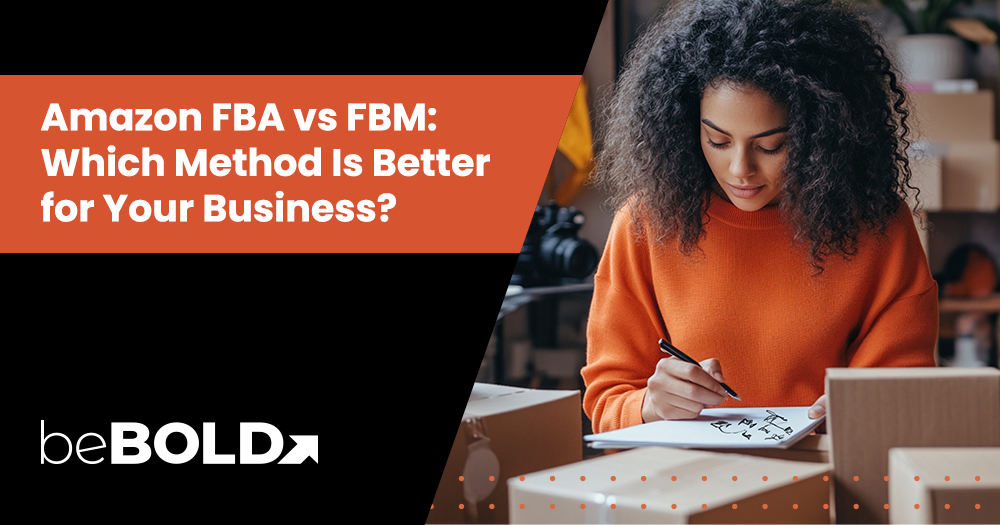

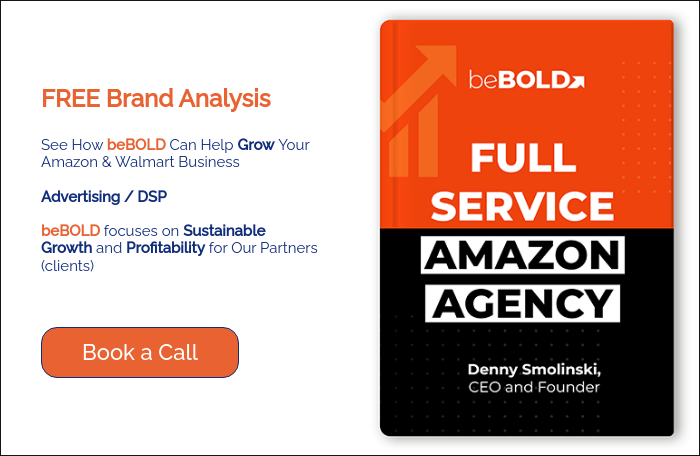


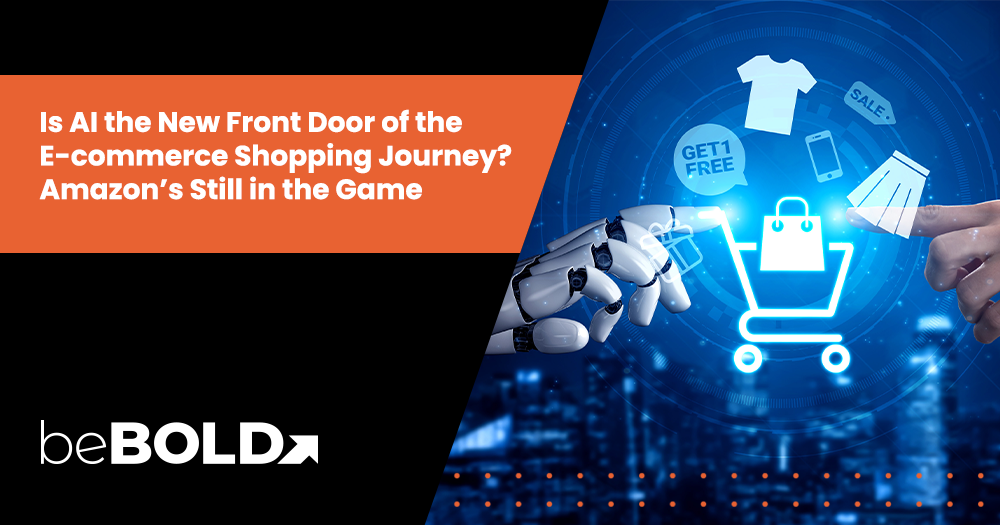
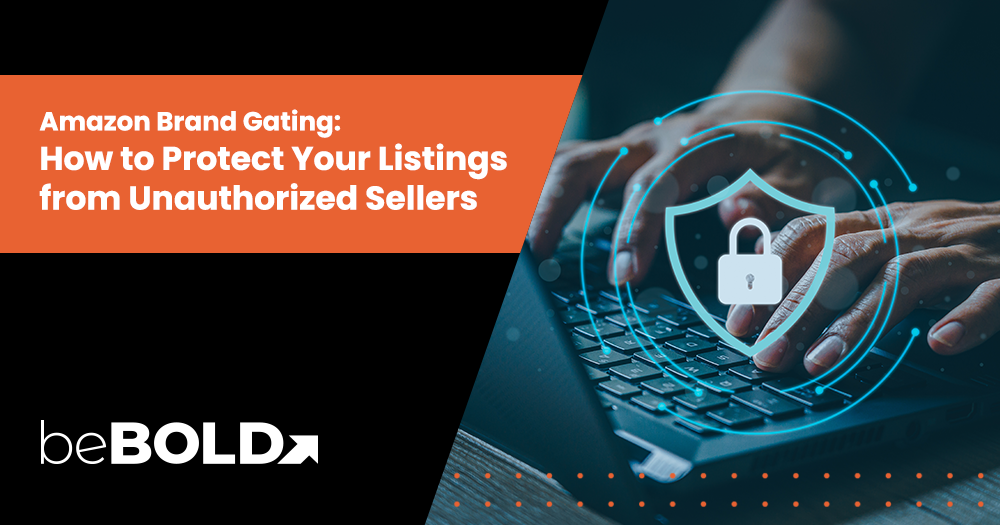
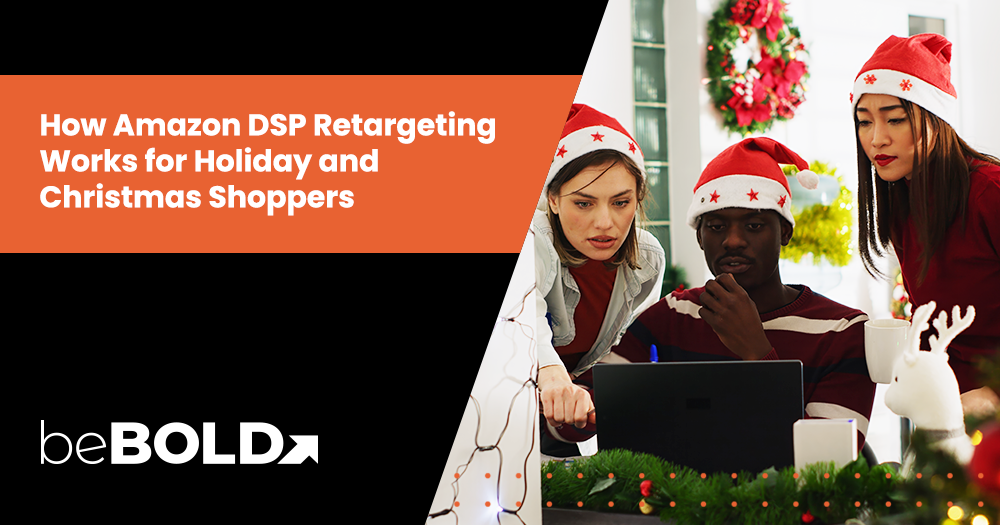
Comments